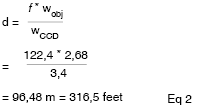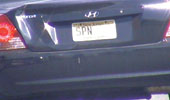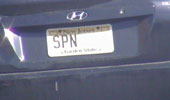
Whenever the subject of video analytics comes up, one of the first applications described is licence plate recognition. It is a big market.
For instance, the University of Sharjah in the United Arab Emirates deployed a vehicle access control system based on a system designed and created by 3Soft USA for Infinova. The Automatic Licence Plate Recognition (ALPR) software uses Infinova’s V1044B Series 1/3-inch outdoor colour camera and V1283 Series IR illuminators.
Developed to let faculty vehicles in and out of their designated parking lot, the system simultaneously captures licence plates at both entry and exit gates using two video capture cards. Once captured, the licence plate is compared with a database of authorised licence plates and the gate barrier remains locked if the licence plate is invalid or is automatically unlocked if the licence plate is valid.
This was a relatively easy installation as the camera was close by the gate and to be used only for that application. There are many more applications where reading the licence plate is not the only application the surveillance system must undertake.
In those instances, how close does the camera need to be when the system is undertaking more than one application? Will I get the reading comprehension I need with the camera that I am selecting? That was the question recently asked of an Infinova field applications engineer by a prospect while working with the integrator in his role of pre-sale support. In this case, the camera was an Infinova V1743N day/night pan-tilt-zoom. It was decided by the field engineer that working the calculations would not be enough. Results needed to be real-world tested. Here is why.
First, the calculation
The relevant specifications of a V1743N include a ¼-inch CCD imager with approximate dimensions of 3,4 x 2,4 mm with a 36X zoom. The zoom’s focal length stretches from 3,4 to 122 mm. In NTSC format at 4CIF resolution, the image dimensions are 704 pixels wide by 480 pixels high. A licence plate is 12 inches (30,5 cm) long.
A simple function for distance (d) in terms of focal length (f), scene width (wobj) and imager width (wCCD) would be the following equation:
The resolution needed will be measured in pixels per foot. Requirements for different situations are as follows:
* General surveillance – less than 40 pixels per foot (about 131 pixels per metre): These applications include watching over a highway looking for traffic jams. There is no need to read licence plates. It would be similar to facial recognition applications where the system is looking to see what a crowd is doing, but does not need to recognise faces or when someone is in a restricted area and there is a need to respond immediately but seeing the face is not important.
* Forensic – 60-80 pixels per foot: In these applications, there is a need to see, record and recognise images such as licence plates and face so that, after the fact, managers and law enforcement can determine exactly what happened.
* High detail – 80 (262 pixels per metre) 120 pixels per foot: This includes applications where not only the licence plate needs to be recognised but also the model of the car. In casino applications, it is where one needs to see employees’ and customers’ faces as well as being able to identify what is in their hands.
It was determined, theoretically, that 80 pixels per foot would satisfy the requirement for forensic detail. The V1743N camera has a horizontal sensor width of 704 pixels. In order to calculate the scene size, the width of the image (measured in pixels) was divided by the desired resolution (measured in pixels per foot). The scene width was found to be 8,8 feet (derived from 704 pixels/80 pixels per foot) or approximately 2,68 metres. Using the above equation with the maximum focal length (largest zoom) of 122,4 mm and the imager width of 3,4 mm, a distance of 316,5 feet would allow for 80 pixels per foot.

The calculations alone will provide a sufficient estimate for the resolution quality needed. An experiment was performed to test out the accuracy of these calculations. The measured pixel per foot is very similar to the calculated resolution. Although the calculation suggests that we are getting 80 pixels per foot for forensic evidence, actual pictures show that lighting conditions, glare and other environmental challenges have a significant effect on the quality of the image. While the image at 320 feet is identifiable, there are issues with the quality. Therefore, always ask your integrator and manufacturer to field test your camera to assure that you are getting the results you need.
Photographs
Measured pixels per foot = 42
Calculated pixels per foot = 42
General – 40 pixels/foot achieved at 600 feet.

Measured pixels per foot = 75
Calculated pixels per foot = 79
Forensic – 80 pixels/foot achieved at 320 feet.

Measured pixels per foot = 116
Calculated pixels per foot = 127
High detail – 120 pixels/foot achieved at 200 feet.

For more information contact Infinova, markw@infinova.com, www.infinova.com

© Technews Publishing (Pty) Ltd. | All Rights Reserved.